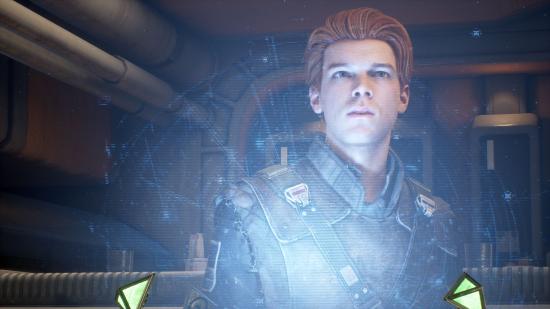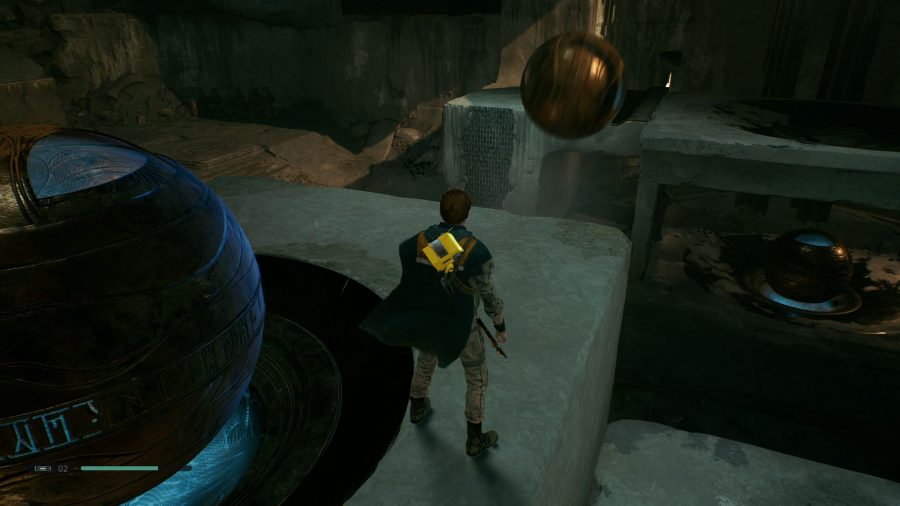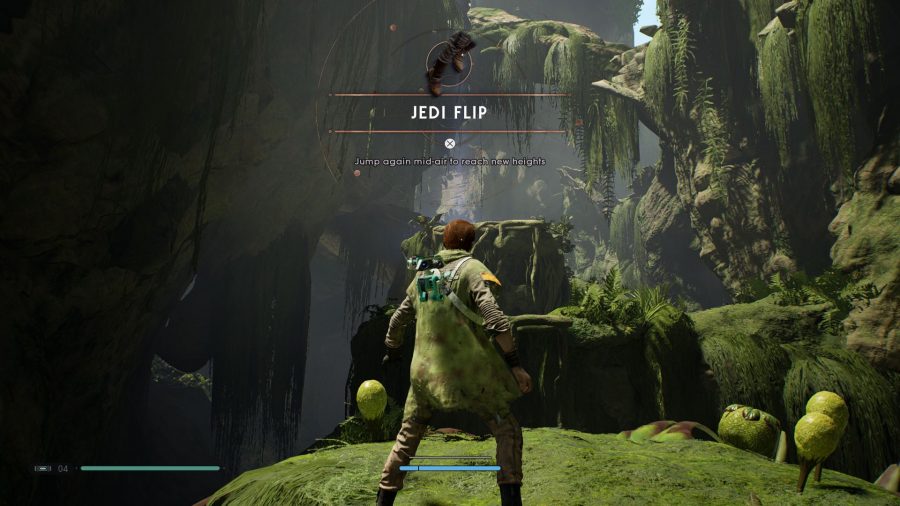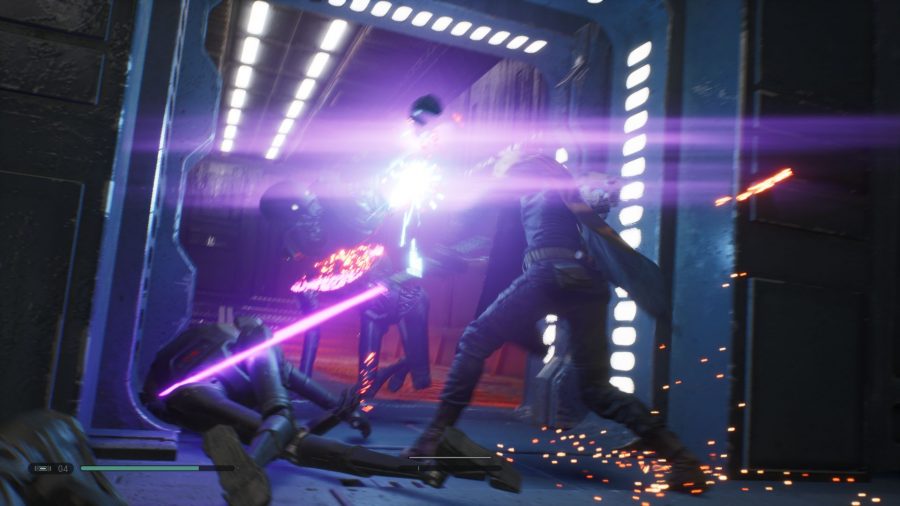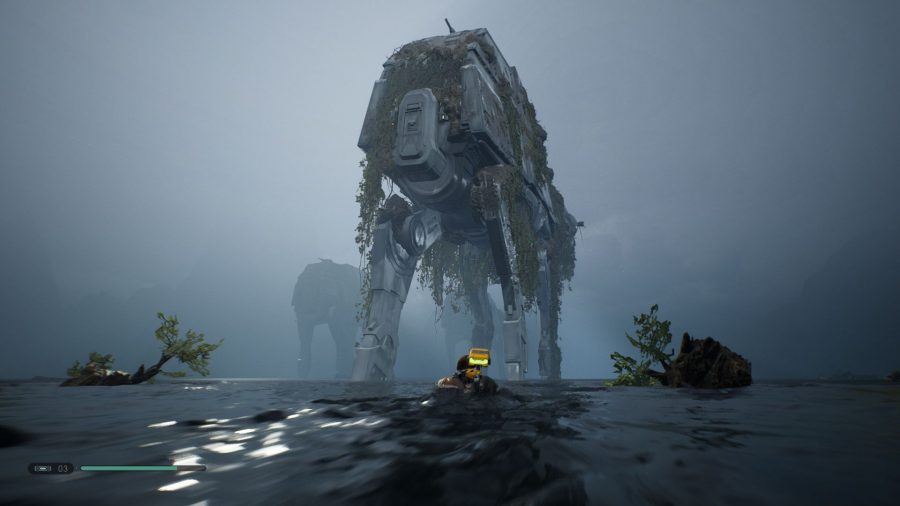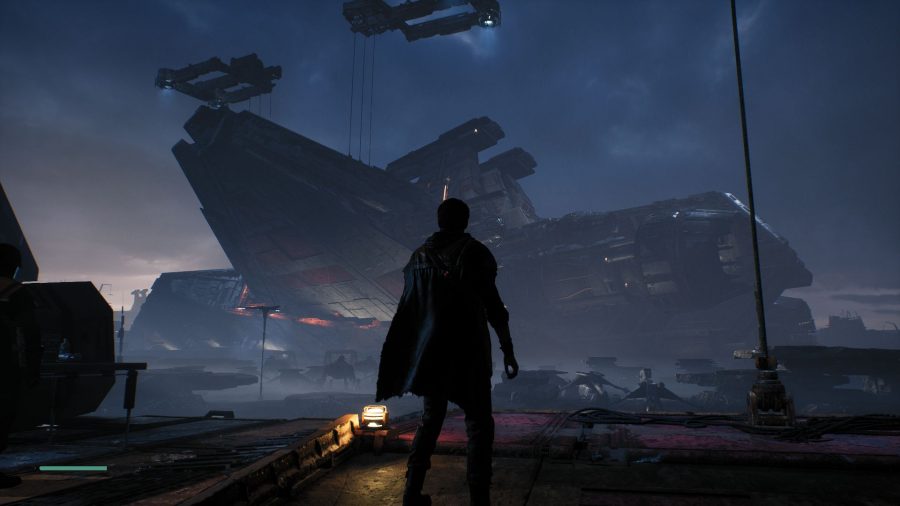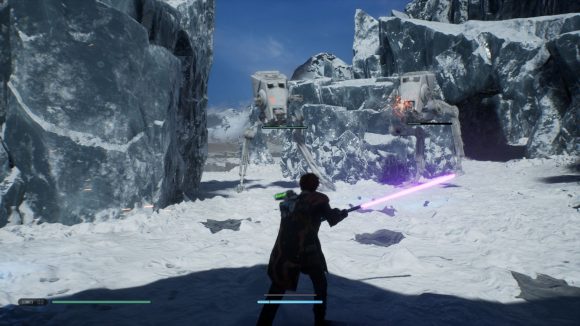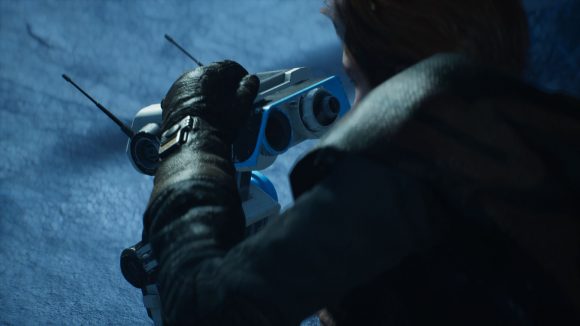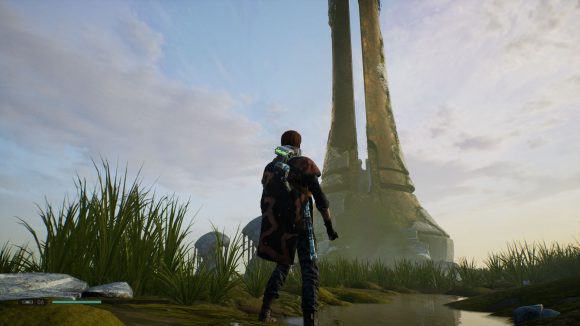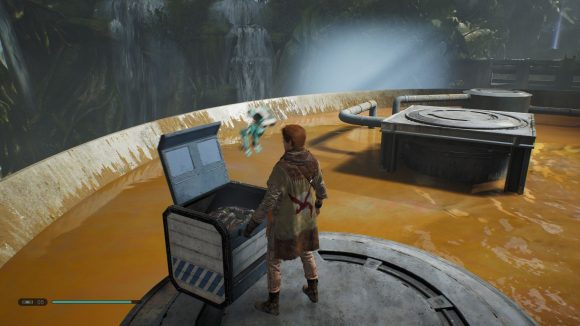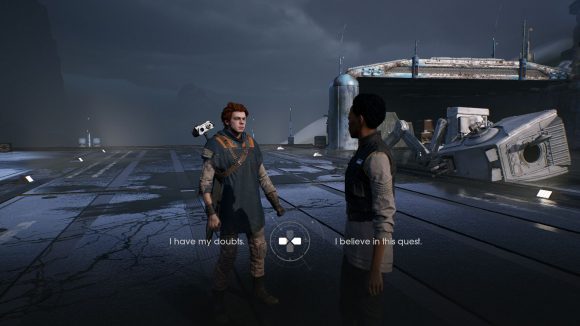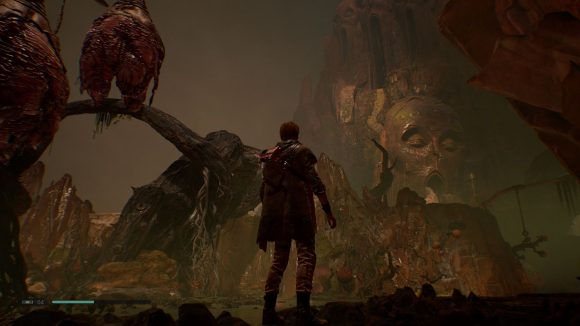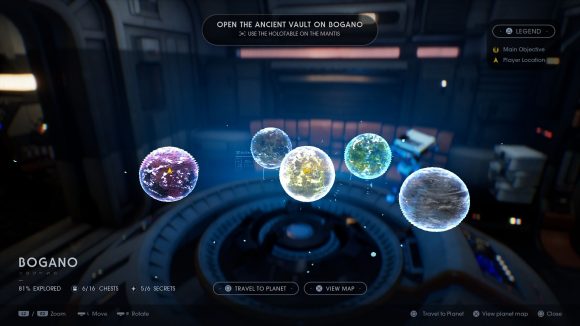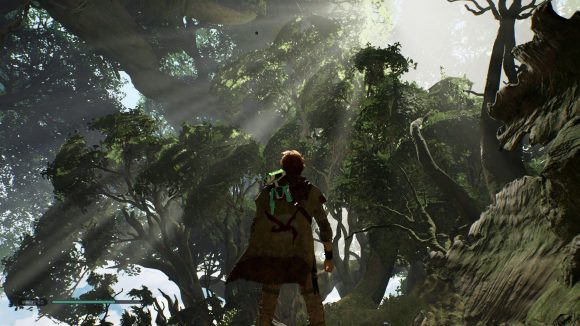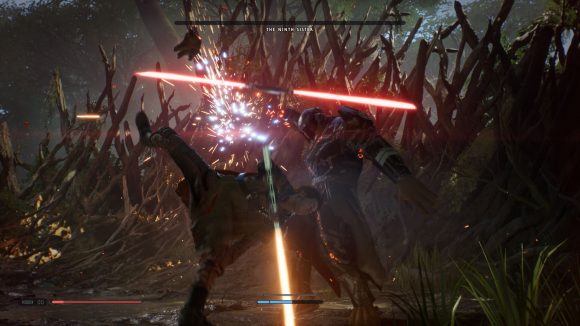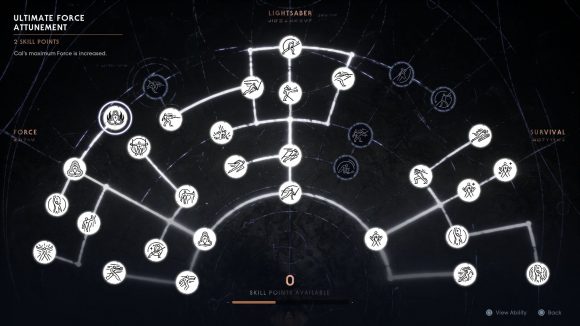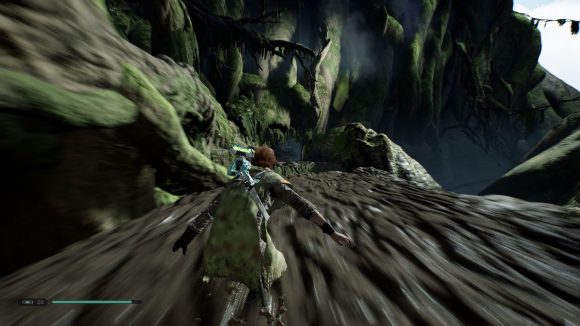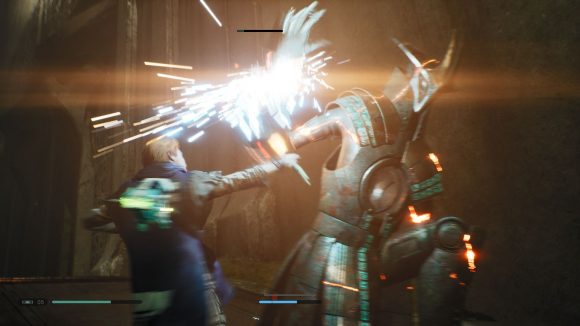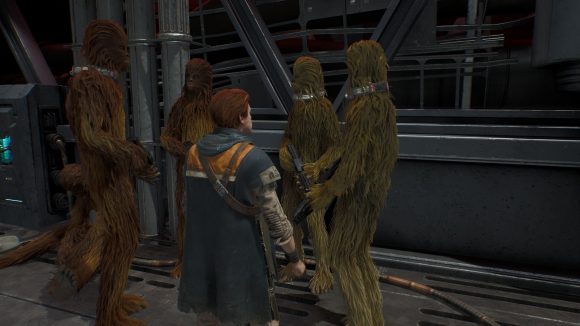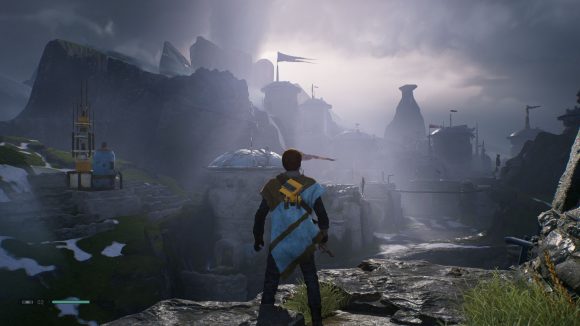Our Verdict
Gameplay is solid from the start and gains depth, transforming you into a Jedi badass. Respawn has also nailed the Star Wars universe, for better (sights, sounds, and cinematic feel) and worse (cringey dialogue and vacuous plot).
Star Wars Jedi: Fallen Order developer Respawn understands that it needs to nail the look, feel, and general sense of wonder of the Star Wars universe – perhaps the most intrinsically cinematic of any yet put to film. Here, the studio succeeds, making a very good game that is fun to play and mostly gorgeous to look at. But – and, as a Star Wars fan, it pains me to say this – as entertaining as they are, the Star Wars movies have points of frustration. So it is with Jedi: Fallen Order.
First and most importantly, gameplay is consistently terrific. For the most part, you’ll be doing three things: fighting, solving puzzles, and traversing cleverly designed levels. All these systems are rock solid, and they interrelate both with one another and with your own powers in smart, satisfying ways.
One early example comes as I explore an ancient, dusty tomb on a planet thought forgotten. I slide down a mossy tunnel, steering my character – the anodyne ex-Jedi Cal Kestis – around a corner before leaping over an abyss to grab a hanging vine. I swing across and run along a wall, jumping free to grab a ledge by my fingertips.
Traversal is often like this – kinetic and exciting. But it can also be thoughtful, bleeding into puzzle-solving. Each area has its own devices: in the tomb, I find several large spheres and many ever-blowing wind tunnels, which I can open and close to channel powerful gales. Developer Respawn introduces these devices in a modest puzzle, in which I use the wind to steer a sphere into a socket on the ground.

Halfway through this bit of galactic tomb raiding, I ‘remember’ how to use the Force to push objects in a neat flashback to my training as a Jedi Padawan. This enables a much trickier puzzle in which I manipulate more spheres into sockets, activating ancient mechanisms that rearrange the tomb and open an escape route. Back on the surface, the wind blasts from new vents in the earth, changing the dynamics of the preceding level in that I can ride their updrafts to access new areas. Force Push also lets me open new paths by blasting rubble apart, or by moving large stones to bring ledges within jumping distance.
This is classic ‘Metroidvania’ design and it recurs throughout Jedi: Fallen Order. A thorough yet easily readable map shows which paths are tantalisingly blocked and which are now available, though backtracking through the game’s large and complex levels can be a nuisance. Fast travel between save points might’ve helped this, and when developer Respawn has cribbed so much else from Dark Souls it’s odd that this is where it drew the line.
That map, by the way, is supplied by your personal droid BD-1. Star Wars has many critters that shoot for ‘cute’ but land on ‘annoying’ (you know who meesa talkin’ about, okee-day?), but BD-1 is a perfect bull’s eye in the shooting gallery of adorable things. When you come to loot a crate he will leap excitedly into it, causing it to rock on its corners as he rummages. He does a little dance when given a new upgrade. I think he’s taking the piss out of probe droids when hacking them by imitating their distinctive robotic crackle. I love him dearly.
Just as BD’s upgrades and Cal’s deepening connection to the Force make you a more potent explorer, so too do you grow as a warrior throughout Jedi: Fallen Order. Anyone who’s played Sekiro: Shadows Die Twice will recognise the basics of its lightsaber combat: you can hold block to negate incoming damage, but successive hits will drain your block meter. Timing a block to the moment an attack lands will parry it instead, which is better, as it’ll stagger melee attackers and return blaster fire directly to its source. Scout Troopers and Stormtroopers, respectively, are the foes upon which you’ll most commonly practice these techniques, but there are many others, which feel purposefully designed to work within all these systems.
Back in that tomb, for instance, there’s a gross parasitic weed called a Skungus that’ll explode if you get too close. This can be perilous in the tomb’s narrow platforms and passages – but not only to you. Before I remember Force Push, the easiest way to take out an intimidating golem is by kiting it into the Skungus, and I soon learn those wind tunnels can also be used to blow the bothersome weeds out of my path. After Force Push, though, Skunguses (Skungi?) are positively welcome, as I can just blast them into enemies for easy damage.
There’s a downside to such purposeful design, though, and it’s to create a sense of artifice. The planets you’ll visit are sometimes too obviously constructed around the player rather than feeling authentic, but it’s easy to forgive this when it results in such fun, tight gameplay. It took me roughly 25 hours to finish the game, with my repertoire of abilities growing meaningfully throughout (the only new aptitude that does seem a bit uninspired is the ability to climb a second type of wall).
By the time you enter the closing chapters, your many powers come together in a symphony of excitement. You’ll string together acrobatic manoeuvres to explore distant clifftops – often ones that you glimpsed a dozen hours ago, wondering if they were even meant to be accessible – and you’ll be spoiled for choice in combat: push half a dozen Stormtroopers to their doom, pull them bodily into the tip of your lightsaber, or just parry them into submission and watch a brutal execution move.
Given the subject matter I can’t help but miss the more precise, more challenging mouse-based swordplay that Jedi Knight II: Jedi Outcast pioneered, but Sekiro is by far the more apt comparison here. FromSoft’s latest is still the genre leader for this kind of combat, but it’s a high compliment that Jedi: Fallen Order delivers a measure of Sekiro’s sense of achievement when early-game bosses recur later on and I dispatch them with ease. That’s partly a result of Cal gaining new powers, but also of leveling up my own muscle memory with respect to parry windows, dodge timings, enemy move sets, and so on. The final level is a gauntlet of tough fights in which to flex those muscles, and to revel in feeling like a Jedi.
Gameplay is only one part of delivering that fantasy. The rest is about careful attention to the particular details of the Star Wars universe. From almost the very first movie – and certainly since the original trilogy concluded – Star Wars has had its own audiovisual language, an alphabet of unmistakeable sights and sounds: the punchy screech and bass hum of an igniting lightsaber, the beeping of an astromech droid, the glossy black floors and cool glowing strip lights that define every Imperial base.
On this point, Respawn has absolutely triumphed. Little bubbles of nerdy joy fizz in my veins every time BD-1 chirrups, or during such big-screen set pieces as climbing an AT-AT, or when I fire up my lightsaber. Lightsaber sound effects even vary by colour; that’s how meticulous this game is.
That detail achieves something beyond player immersion. It also lends weight to Jedi: Fallen Order’s contribution to the Star Wars universe. Games like this are a precious opportunity to show that universe from a new perspective; the movies focus on the galactic conflict, but often miss what life is actually like for ordinary people under the Empire (Solo is a rare exception – one of many reasons why it’s sadly underappreciated, in my view). Blowing up a planet is undeniably horrific, but unlike most of the movies, Jedi: Fallen Order actually has you meet some of the millions of voices crying out in terror, to paraphrase Obi-Wan Kenobi.
The first mission is set in a gargantuan scrapyard on a rainy ocean planet, where hardware from the Old Republic is broken up by underpaid workers in dangerous conditions. In the first of many moments where Jedi: Fallen Order acknowledges Star Wars’s intrinsic relationship with cinema, the field of view pulls out and camera angles move to maximise the spectacle of a Venator-class star destroyer having one of its wings torn off, heedless of the expendable workers beneath. The final chapter gives an even more harrowing, personal view of the horrors of which the Empire is capable.
It’s the stuff in the middle that’s frustrating. Jedi: Fallen Order’s story is essentially a race between Cal’s crew and the Empire to obtain a MacGuffin, punctuated by the pursuit of guffier MacGuffins. It’s very simple stuff, and prone to villains appearing out of thin air to say things like ‘thank you for leading me here, bwahaha! I planned it the whole time, bwahaha! Even though I’ve earnestly tried to kill you twice already, bwahaha!’ And so on.
The script is similarly clichéd. Expect endless platitudinising about the need to come together, the importance of courage, the sparkliness of rainbows, and insipid observations that – of a train derailment – “this is bad!” Cal is a void of personality so complete that it might be deliberate, as if to invite the player to supplant their own consciousness, though Cameron Monaghan’s performance is about as good as it can be given the circumstances. The supporting cast all have their moments, but again, the best stuff comes toward the end of the story. Cere, a fallen Jedi and your new mentor, spends half the game delivering those aforementioned clichés with a surfeit of earnestness, until some interesting wrinkles in her backstory have their chance to play out.
Probably the best character in the game lances the solemnity on your ship with dry, edgy humour and penetrating, tricky questions about whether what you’re doing is a good idea at all – it’s just a shame she doesn’t join the crew until the game is almost finished. “I don’t know what you’re saying,” is her curt rejoinder to a chipper series of beeps from BD-1, which produces a mournful hum in reply. It’s frigging adorable and Jedi: Fallen Order needs about 1,000% more of both of them (I say this while fully acknowledging that BD is almost ubiquitous).
Finally, a quick technical note. With a GTX980, 8GB of RAM, and most graphics settings at their highest level, I had a mostly stable experience with smooth frame rates, but there were some exceptions. There was a definite and consistent touch of juddering when arriving on new planets or loading especially busy scenes, and on one or two occasions I noticed some graphical artifacting, the odd suspiciously low-res texture, and the odd animation quirk – Cere, for instance, fancied a quick squat halfway through one of our conversations for no apparent reason, and Cal’s poncho sometimes flutters wildly even in still air. These were rare issues in my experience, but if your rig is getting on a bit, maybe hold off until our performance review later this week.
Jedi: Fallen Order’s story is meaningless, and its cast take a bit too long to do or say anything interesting. There’s a general feel of safety and déjà vu, and a lack of flair or daring. But it gets the most important things right: it’s one of the best representations of the Star Wars universe there’s ever been in a game, and in its moment-to-moment action it delivers on its core promise: it lets you feel like a Jedi.
